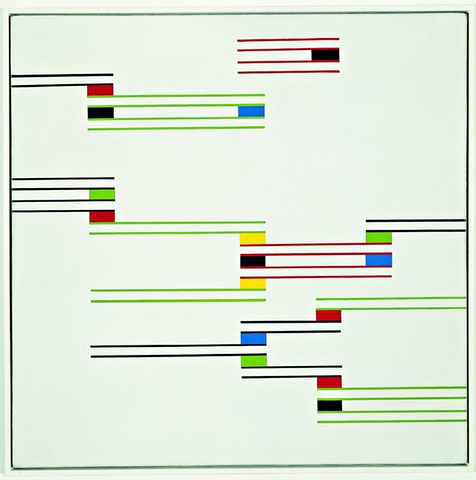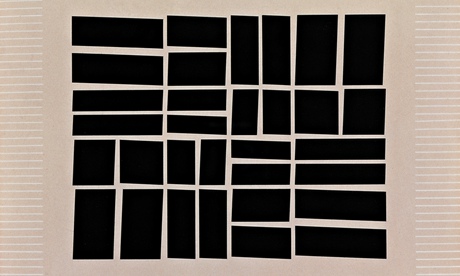When Tradition Becomes Radical
For this edition of my blog I have asked my husband, British author Nicholas Griffin, to be my guest writer. The topic is Radical Geometry, a show currently at the Royal Academy of Arts in London of our family’s collection of modernist Latin American art.
 Alfredo Hlito’s Chromatic Rhythms II, 1947. Courtesy of Sonia Henríquez Ureña de Hlito
Alfredo Hlito’s Chromatic Rhythms II, 1947. Courtesy of Sonia Henríquez Ureña de Hlito
Finally, after traveling everywhere from Brazil to Spain, Texas to New York the Collection has arrived in the city where I grew up, London. I left London for good in 1989, the same summer when the Hayward opened their landmark show on Latin American art. Many of the artists that have long resided in the CPPC (Coleccion Patricia Phelps de Cisneros) were displayed back then. The art being judged hasn’t changed in those twenty five years. Yet its reception couldn’t be more different this time.
The show at the Royal Academy is floating on top of a sea of superlatives. “Dazzling”, says the Guardian. “Stunning,” says the Daily Telegraph. “Sensational,” says the UK’s version of the Huffington Post. I’m guessing that will go on for a while. There’s something a little karmic about the reception because boy did London get things wrong last time.
The Guardian, the same newspaper that gave not one but two large glowing reviews of this Royal Academy show wrote very differently about Latin American art back in 1989. The newspaper’s critic concluded that “Europeans tend to find pleasure in such pictures, a pleasure which is not fully intended by the painter.” Latin American artists weren’t perceived as being intelligent enough to be doing anything deliberately, so the aims of the artist whether political or cultural weren’t even considered. That was rich coming from the left wing Guardian, who preferred its Latin American revolutionaries to be wielding machine guns not creating Kinetic art.
 Helio Oiticica’s Metascheme, 1958. Courtesy of Projeto Helio Oiticica
Helio Oiticica’s Metascheme, 1958. Courtesy of Projeto Helio Oiticica
This time it’s all so different. Is it just timing? Or maybe it’s also curatorship? The case made at the Royal Academy is very clear. The Latin American artists were men and women who knew how Europeans thought because they’d lived or traveled in Europe. They brought back ideas, adapted them, improved them, and deliberately forgot them. They wandered down paths that their European contemporaries couldn’t have envisaged because the Europeans hadn’t lived or traveled in Latin America.
Obviously the world is such a different place than it was twenty five years ago. We’re not quite so certain where its center lies these days. We’re all more open to voices from different corners of today’s world, but how refreshing to see such consideration of the past. That’s exactly what these artists were searching for fifty, sixty years ago.
Additional Press Coverage:
Artists Insight: Radical Geometry at the Royal Academy
Financial Times: Radical Geometry: Modern Art of South America, Royal Academy, London – Review
Apollo Magazine: Review: Radical Geometry, South American art at the Royal Academy, London
London Evening Standard: Radical Geometry, Royal Academy – exhibition review
